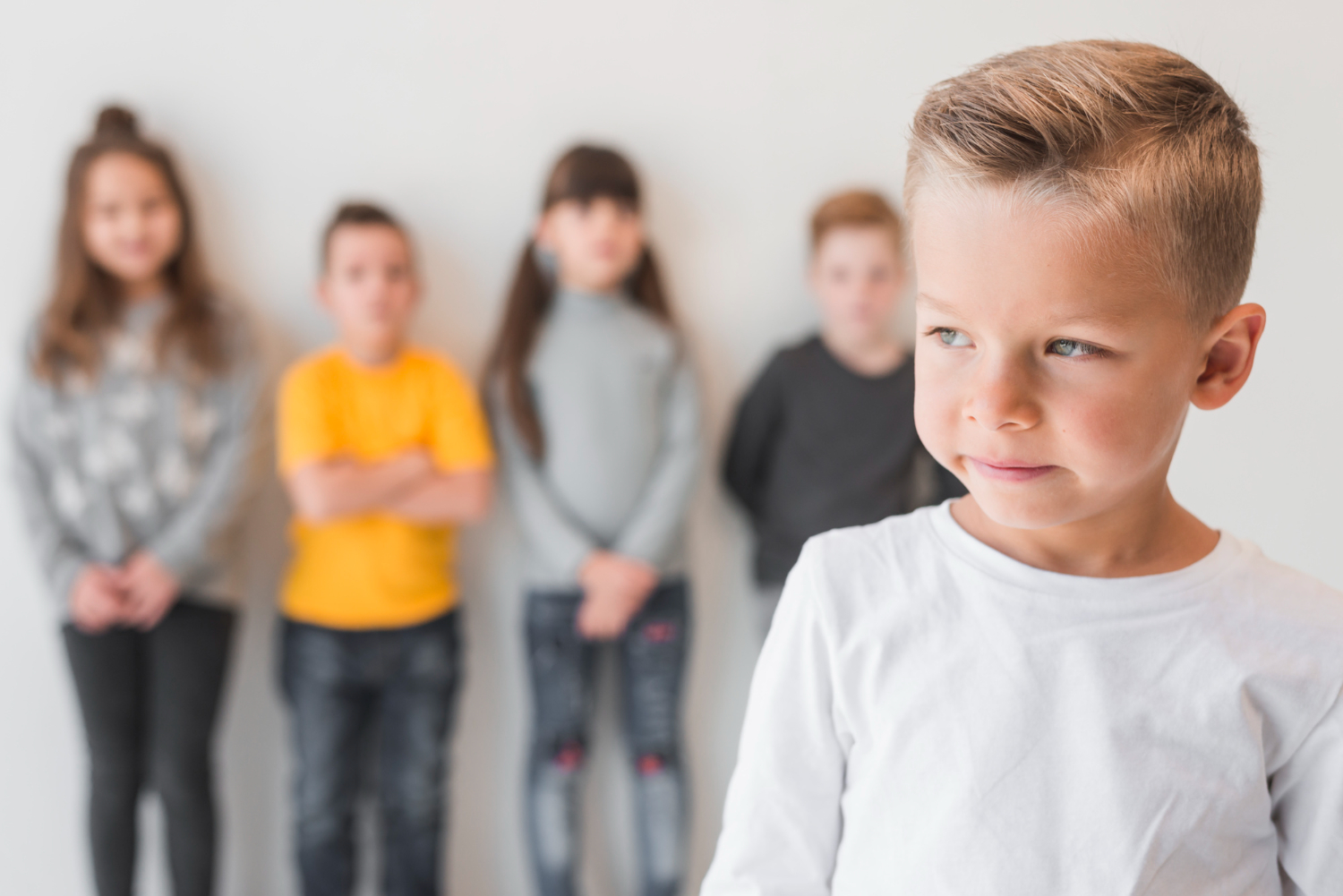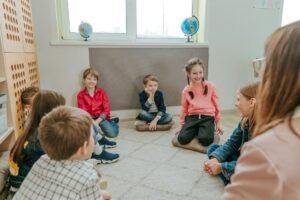Social anxiety in kids doesn’t always show up the way people expect. It isn’t about only quiet kids who avoid groups or shrink away in the classroom. Some children with anxiety are talkative and high-energy. They might seem to thrive in social settings, but underneath, a steady current of worry can run—worries about saying the wrong thing, being left out, or feeling judged.
As Oregon schools open in early September, these feelings can get even more intense. Even children who seem outgoing may feel anxious about packed classrooms, shifting friendships, or busy after-school routines. The signs aren’t always flashes of distress, so it’s easy for caregivers to overlook them. That’s why looking beyond how a child acts on the surface matters.
There are helpful ways to support kids who are socially active but still dealing with anxiety, especially as routines shift back into school mode.
Helping Social Kids Doesn’t Mean Pushing Them Harder
Just because a child enjoys making friends doesn’t mean every moment around others is comfortable. Sometimes, social energy comes in quick bursts, and after a full day of group activities at school, a child might be completely drained. Tiredness later isn’t laziness. It can hint that keeping up appearances and keeping anxiety in check takes a lot of work.
Rather than pressuring these kids to take on more because they appear capable, it helps to watch how they wind down. Do they need a quiet bedroom or their favorite book right after a long day? Are they cheerful with friends but grumpy at home?
Small daily routines can help bring balance, such as:
– Spending half an hour in a quiet spot after school without screens or homework
– Going over tomorrow’s social activities at bedtime to prepare gently
– Offering low-pressure choices, like allowing them to skip a weekend event if they seem worn out
A check-in should never feel like an interrogation. Soft questions and offering a break after a busy day give kids space to share. Giving them room to decompress means less tension will pile up overnight too.
Mindful Mental and Behavioral Health PLLC provides age-appropriate therapy and family counseling that supports children and caregivers as they navigate social anxiety. These services are available in a private, judgment-free setting, so Oregon families can focus on what works best for them at home or during transitions.
Understanding the Hidden Signs of Social Anxiety in Kids
Social anxiety in kids can be tough to spot, especially when a child knows how to hide it. Some children seem fine at a birthday party, then fall apart in private afterward. Families may say, They are bubbly around classmates, but something changes when they get home. This contrast can be a major clue.
Hidden anxiety can look like:
– Rehearsing what to say over and over for a group project
– Feeling overwhelmed by loud rooms or chaotic events, even while acting outgoing
– Worrying about fitting in or being liked, even with old friends
The pressure to be perfect or to please everyone can add up. Overloading the calendar with clubs, sports, or group outings can stretch social kids too thin. It can leave them with less energy for joy and fun.
Try watching which activities seem energizing versus those that drag them down. Sometimes, a day spent quietly with art supplies or building something can do more good than another group event. Adjusting the pace lets kids recharge instead of pushing through hidden stress.
School Transitions and Seasonal Triggers
When fall arrives in Oregon, new school routines and fresh starts can raise stress for any child. For kids with social anxiety, this transition packs an even bigger punch. Getting used to stricter schedules, louder lunchrooms, and new peer groups can lead to sleepless nights and tension that children might not know how to explain.
Worries about class participation, finding a seat at lunch, or keeping up with new teachers can show up in new ways. Physical complaints like stomachaches before the school day or a sudden drop in energy are common signals that a child is feeling the strain, even if they never say “I’m nervous.”
Here are a few ways to make the shift easier:
– Practice the school-day routine a few days beforehand
– Use short, gentle conversations to walk through what a typical day might look like
– Start the year with calm, slower mornings whenever possible
Oregon’s shorter daylight hours and unpredictable fall weather can make both children and adults feel more tired or moody. It helps to keep expectations loose instead of piling on extra demands. Some days, just getting through the basics is enough.
Supporting Without Drawing Spotlight
Lots of kids want to blend in, not stand out as the one who has trouble in social situations. Extra attention can make things worse, especially if it’s public. Support can be there without putting a child on the spot.
Here are a few approaches that slip quietly into daily life:
– Agree on a private code word for when they need to step away for a break
– Encourage quiet journaling or drawing time to help gather their thoughts
– Break up homework or chores with small movement breaks that release tension
At school, teachers or caregivers can offer support without drawing notice. They might set up a relaxing space for any student who needs it or give the option to participate in class without having to talk every time.
Effective support doesn’t mean fixing everything for a child. Instead, it’s about listening to what they seem to need, letting them take the lead when possible, and not centering every conversation on worry or differences. Even everyday changes, like a regular quiet hour or check-ins throughout the week, can make a real difference.
Mindful Mental and Behavioral Health PLLC specializes in evaluating social anxiety in kids and provides recommendations for personalized routines and strategies, helping families in Oregon adjust at their own comfort level.
Making Room for Growth at Their Pace
Every child grows and changes in their own way, especially emotionally. It’s only natural to want them to bounce back fast, especially if they seem friendly, smart, or quick to laugh. Yet stress that is hidden can stick around beneath those upbeat behaviors.
Pushing a child to be braver or insisting that they take another leap right away doesn’t always have the effect adults hope for. Giving space and time to process events makes a bigger impact in the long run.
It helps to be curious and kind when talking with kids. Simple questions, such as What felt tough today or What part went better than expected, invite children to reflect on their feelings in a no-pressure way. It opens the door to more honest conversation, which builds trust.
Most grown-ups automatically react to what they see. The louder the emotion, the faster the response. But the stress that never shows up on the surface is just as real. It takes extra care and patience to watch for, and just as much attention.
Learning to Listen Below the Surface
Kids who appear confident in a group can be struggling in private. Listening closely for smaller changes can reveal bigger needs. Sometimes, you’ll notice a drop in energy after a busy day. Other times, there’s hesitation before a party or a crash in mood after a long school week. These are all clues.
Supporting social anxiety in kids does not have to involve big, complicated steps. More often, the best approach means listening closely, shaping daily routines thoughtfully, and choosing patience instead of pushing. Each child deserves to feel comfortable as themselves, even as the school year begins and schedules change fast.
As fall settles in and life speeds up again, finding the right rhythm for your child has lasting value. That rhythm may not always be packed full of activities. For some children, it starts with a pause and a quiet check-in. Letting a child set the pace helps make the whole season feel a little lighter and a lot more manageable.
At Mindful Mental and Behavioral Health PLLC, we understand that every child shows stress in their own way, and it’s not always clear what’s going on beneath the surface. If you’re looking for thoughtful support around social anxiety in kids, we’re here to help you make sense of what your child might need right now.




